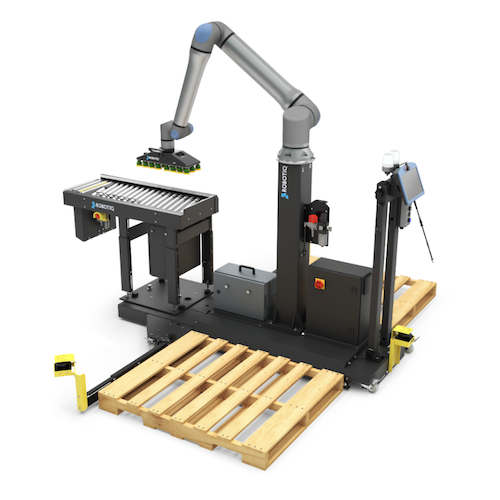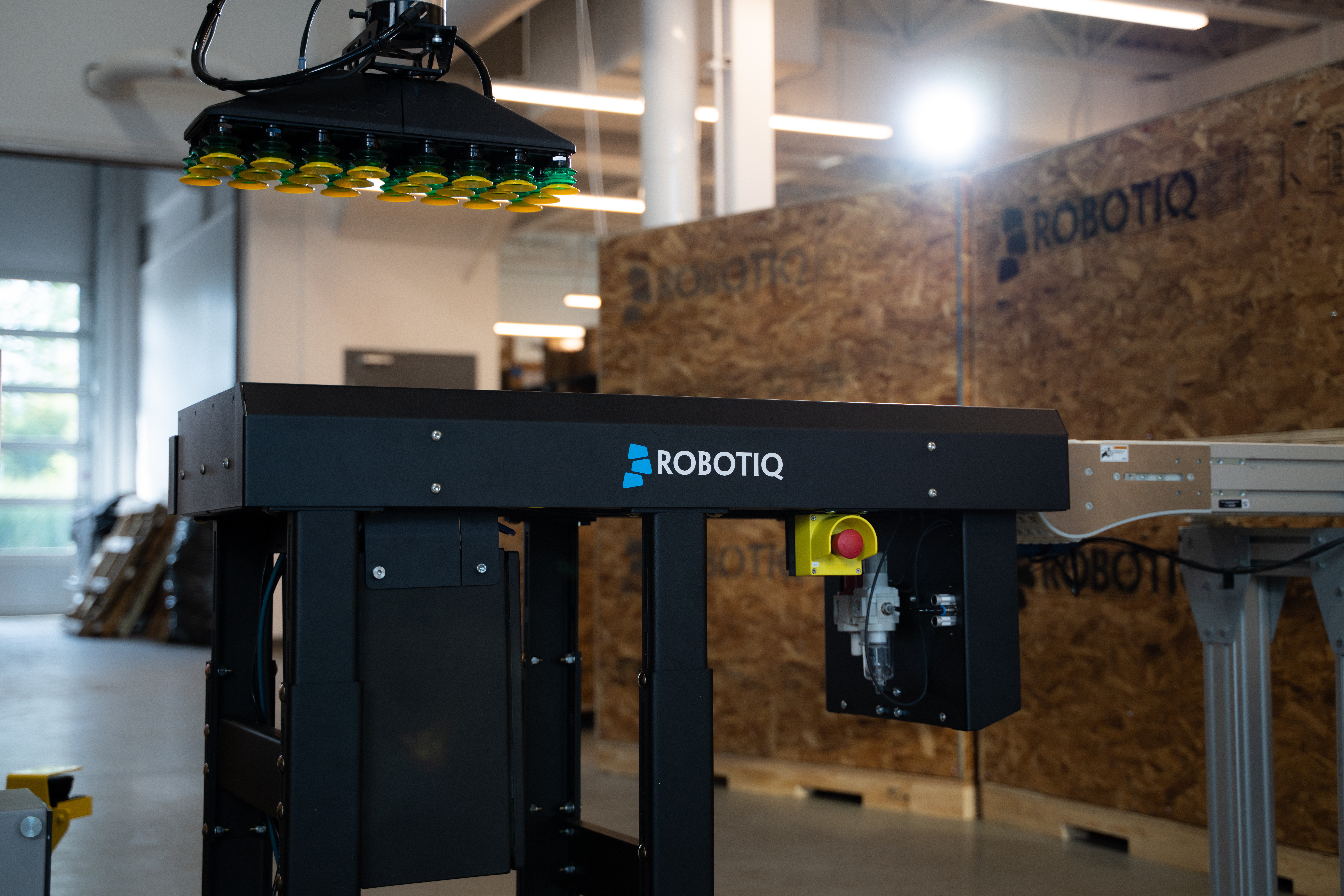9 Factors That Will Affect Your Cobot Palletizing Deployment

Posted on Oct 19, 2020 in Palletizing
5 min read time
When you're designing a robot palletizing cell, what factors will affect the deployment?
How can you maximize your design efforts to get the robot up and running quickly?
Which factors should you focus on and which should you ignore?
If you've decided to go with cobot palletizing — and it's certainly a great option — it's likely that you are now thinking about the design of your cobot cell.
You've recognized the benefits of robotic palletizing. You know that it can improve the safety of your palletizing task, reduce damage to products, and allow you to get products out of the door more quickly and consistently. Plus, you know that it will allow you to move your workers away from the dull, repetitive task of manual palletizing.
But, now that you've reached the design phase of deployment, maybe you're not sure how to move forward.
It might feel like there are a lot of potential moving parts in a cobot palletizing deployment.
What factors do you need to consider when designing your palletizing cell?
Is designing a cobot palletizing cell easy or complex?
It's important to take some time to think about your cobot cell design before you even invest in the robotic technology itself.
In the past, designing a robot application was difficult and a specialist's job. Traditional industrial robots require a whole set of extras, accessories, and robotics knowledge to get them working.
As a result, many people think that designing a robot palletizing cell is going to be a big and complex task. They are uncertain about starting the deployment.
But, the best thing about collaborative robots is that they have opened up robotics to anyone, no matter what your level of robotics knowledge is.
And with the addition of easy-to-deploy application solutions for robotic palletizing, it is now simpler than ever to get your palletizing cobot up and running quickly.
Even so, there are a few factors that will affect how complex your cobot cell will need to be.
Remember, complexity is only useful in a cobot cell if it is required for you to achieve the performance that you are looking for.
9 factors that will affect your cobot palletizing deployment
When designing your cobot palletizing cell, you should only focus your attention on those factors that will affect the operation. Thinking about these upfront will help you to "zoom in" on those aspects of the palletizing task that will affect your design (e.g. the type of end effector for the robot, any accessories or sensors required, the layout and flow of the cell).
Here are 9 factors that will probably affect your palletizing cell design:
1. The variety of objects to be palletized
If all of the objects that you need to palletize are exactly the same, this makes palletizing easier to deploy. However, one of the great benefits of robotic palletizing is that it can be flexible to different objects passing through it. All you need to do is make allowances for the variations between objects in the robot's programming.
2. The physical properties of those objects
A key factor that will certainly affect your cell design is the physical properties of the objects that are to be palletized. This includes their size, geometry, weight, and any other property that will determine what type of cobot you will use. These properties may also affect the end effectors you can use and any sensors required. Try our configurator and see for yourself.
3. Additional items needed for palletizing
A common mistake that people make when looking at robotic palletizing is to ignore the additional items that are needed. For example, it is very common to use sheets made of card between layers of non-cuboid objects — e.g. bottles or tins. The robot must be able to manipulate these additional items or they won't be able to complete the whole palletizing task.
4. Surface properties of the objects
The surface of objects to be palletized will affect what type of end effector you can use. For example, vacuum grippers are a common choice for many palletizing tasks. They can easily pick up objects from above. However, these are not suitable for very porous materials, where a gripper or other end effector may be a better choice.
5. Throughput of objects in the process
The throughput of your process will affect how you set up your cobot cell. For example, if your process has a low throughput, you might choose to move the robot slowly. On the other hand, you might choose to process the objects in batches and reuse the robot for another palletizing or depalletizing task in the extra time that you have saved.
6. Preceding steps in the process
The steps before your palletizing cell will determine how objects arrive at the robot. Whatever type of operation these steps perform (e.g. packaging, inspection, labeling) you should be clear on the outputs of those operations and how they will affect the palletizing robot.
7. Subsequent steps in the process
When we are deploying a robot cell, we like to think of the next cell after the robot as being the "customer" of the robot cell. This is part of the Lean Robotics methodology that allows you to design, integrate, and deploy robot cells quickly and easily. Look at your robot cell's customers and determine how you can improve the quality of the robot's output.
8. Previous experience with robotics
Of course, this palletizing robot might "not be your first rodeo." If you have experience deploying robots in the past — particularly cobots — then think of this deployment as an opportunity to apply the lessons you learned last time. Your experience will be very helpful. If this is your first cobot deployment, you will learn a lot during it.
9. Employee support and understanding
Even more important than your previous robotics experience is the support and understanding about the robot by your employees. If they understand what you are trying to achieve with your new palletizing cobot and you provide them with enough information, they will become valuable contributors to a successful cobot deployment.
How to get started with your palletizing robot
Think you might be ready to start designing your cobot palletizing cell?
Check out our new palletizing application solution and start production faster.
What task are you designing your palletizing cobot to achieve? Tell us in the comments below or join the discussion on LinkedIn, Twitter, Facebook, or the DoF professional robotics community.




-modified.png)


-2.jpg)

Leave a comment